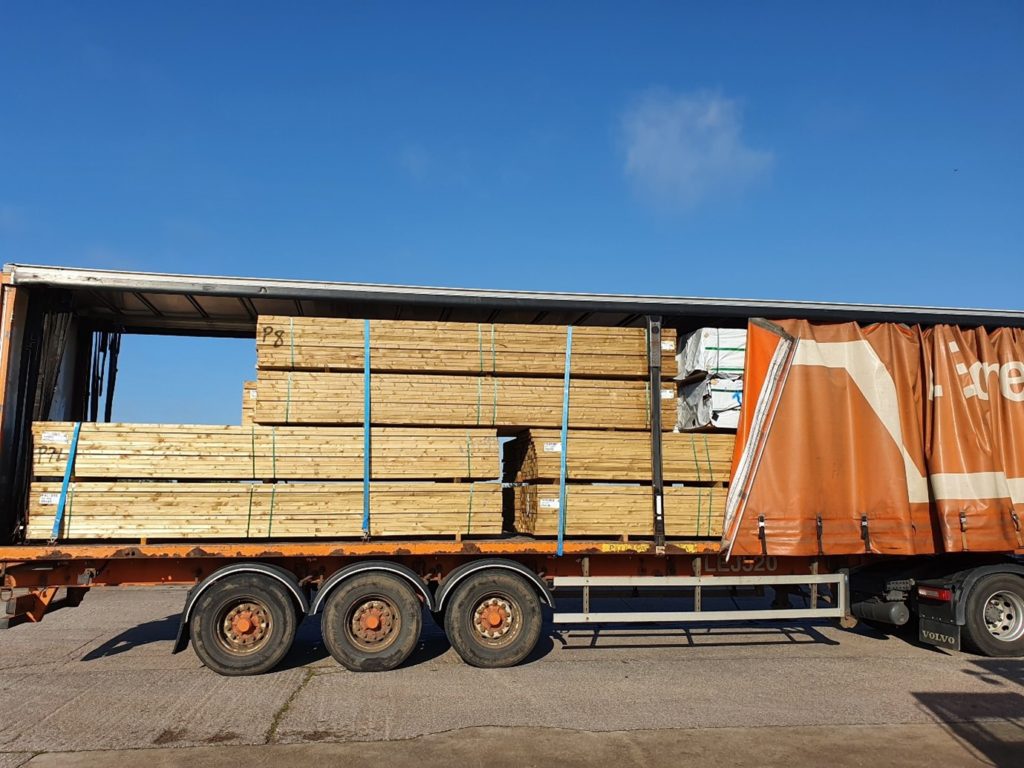The Timber Journey
4:06 pm
Have you ever wondered how timber gets from the forest to us, a Timber Merchant?
Timber is a key material in construction and has been for many years.
- How do you get a piece of timber?
- How does a tree become a piece of timber?
Let us take you through the process of how it goes from a tree to a key material for construction.
Stage one: Felling

Felling – is the process of downing individual trees and is part of the logging process to prepare the trees for commercial use.
Trees will have reached their economically mature stages before felling. The mature stage can vary from 40 to 150 years this is the age when the tree has stopped growing, the length of time can depend on environmental factors such as soil and nutrients. When a tree has reached the economically mature stage a forestry worker will usually mark the tree so the feller knows which trees should be felled.
Felling is typically carried out in the winter when the trees have less moisture compared to that of summer months. In the summer months trees can have approximately 50 percent more water content.
Felled trees are then replaced with saplings, so the forest has chance to grow again. This provides a sustainable resource for generations to come.
Stage Two: Storing/Transporting
The felled trees, now logs are stored in a clearing in the forest until required by the sawmills. Storing the logs allows the water content to evaporate and therefore reducing the weight which in turn reduces the cost of transporting and handling.
Logs are usually too long to be transported, they are therefore cut into smaller lengths so they can be collected by a timber lorry and taken to timber processing sites such as sawmills, paper mills, pallet mills.

Stage Three: Timber Processing
At the timber processing site, the logs are debarked and bucked. They are sized to length, using equipment such as crosscut saws and bandsaws. This is called the ‘Conversion’.
Conversion is done in a couple of stages:
- Breaking down – which means rough sawing
- During this stage they are either through sawn or quarter sawn
- The end of each log is trimmed to ensure they are straight (before being cut into boards
- Large circular saws are used to process the boards and remove the curved edges
- Re-sawing – referring to a more precise cutting and finishing process, such as planning, grading and further machining
Stage Four: Seasoning
Seasoning of natural wood is the process of removing excess water / moisture content.
Trees contain between 40% to 50% of water when felled, the water is held in the tree in two ways:
- Free water – water that is held in the vessels and cells to distribute nutrients inside the tree
- Cell Water – also known as bound water and is an essential part of the trees cell walls.
During the seasoning process, a tree loses its free water and a high proportion of its cell water and as a result is less likely to warp or deform.
Wood that has not been seasoned and still has a high-water content is called green wood and can be more difficult to work with because it tends to change shape.

Stage Five: Preparing for Market
The market value of timber can be further increased through manufacturing sawn timber products. This is known as secondary processing.
Secondary processing creates a more refined product, it is at this stage that any preferred treatments to timber are carried out. Treated sawn timber is used directly in construction or used in construction components such as timber frames.
We receive this treated timber into our yard ready for customers’ orders!
